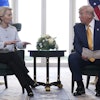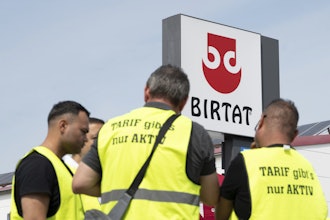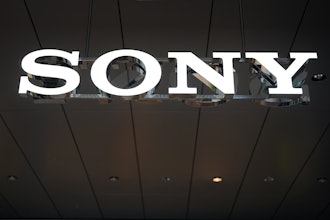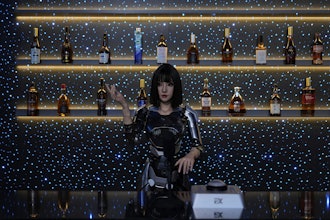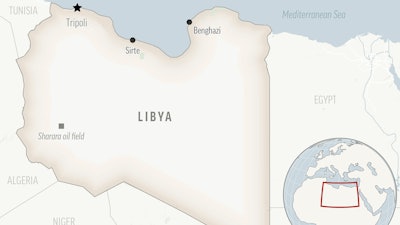
DUBAI, United Arab Emirates (AP) — Some 2.5 tons of natural uranium stored in a site in war-torn Libya have gone missing, the United Nations nuclear watchdog said Thursday, raising safety and proliferation concerns.
Natural uranium can't immediately be used for energy production or bomb fuel, as the enrichment process typically requires the metal to be converted into a gas, then later spun in centrifuges to reach the levels needed.
However, each ton of natural uranium — if obtained by a group with the technological means and resources — can be refined to 5.6 kilograms (12 pounds) of weapons-grade material over time, experts say. That makes finding the missing metal important for nonproliferation experts.
In a statement, the Vienna-based International Atomic Energy Agency said its director-general, Rafael Mariano Grossi, informed member states Wednesday about the missing uranium.
The IAEA statement remained tightlipped though on much of the details.
On Tuesday, "agency safeguards inspectors found that 10 drums containing approximately 2.5 tons of natural uranium in the form of uranium ore concentrate were not present as previously declared at a location in the state of Libya," the IAEA said. "Further activities will be conducted by the agency to clarify the circumstances of the removal of the nuclear material and its current location."
Reuters first reported on the IAEA warning about the missing Libyan uranium, saying the IAEA told members reaching the site that's not under government control required "complex logistics."
The IAEA declined to offer more details on the missing uranium. However, its acknowledgment the uranium went missing at a "previously declared site" narrows the possibilities.
One such declared site is Sabha, some 660 kilometers (410 miles) southeast of Libya's capital, Tripoli, in the country's lawless southern reaches of the Sahara Desert. There, Libya under dictator Moammar Qadhafi stored thousands of barrels of so-called yellowcake uranium for a once-planned uranium conversion facility that was never built in his decadeslong secret weapons program.
Estimates put the Libyan stockpile at some 1,000 metric tons of yellowcake uranium under Qadhafi, who declared his nascent nuclear weapons program to the world in 2003 to after the U.S.-led invasion of Iraq.
While inspectors removed the last of the enriched uranium from Libya in 2009, the yellowcake remained behind, with the U.N. in 2013 estimating some 6,400 barrels of it were stored at Sabha. American officials had worried Iran could try to purchase the uranium from Libya, something Qadhafi's top civilian nuclear official tried to reassure the U.S. about, according to a 2009 diplomatic cable published by WikiLeaks.
"Stressing that Libya viewed the question as primarily a commercial one, (the official) noted that prices for uranium yellowcake on the world market had been increasing, and that Libya wanted to maximize its profit by properly timing the sale of its stockpile," then-Ambassador Gene A. Cretz wrote.
But the 2011 Arab Spring saw rebels topple Qadhafi and ultimately kill him. Sabha grew increasingly lawless, with African migrants crossing Libya, saying some had been sold as slaves in the city, the U.N. reported.
In recent years, Sabha largely has been under the control of the self-styled Libyan National Army, headed by Khalifa Hifter. The general, who is widely believed to have worked with the CIA during his time in exile during Qadhafi's era, has been battling for control of Libya against a Tripoli-based government.
A spokesman for Hifter declined to answer questions from The Associated Press. Chadian rebel forces also have had a presence in the southern city over recent years.



